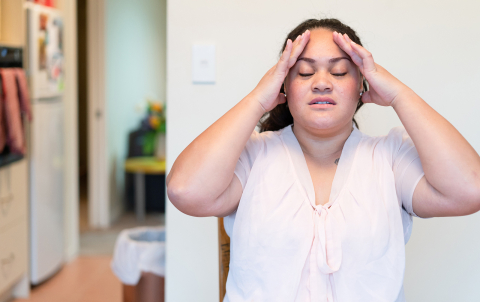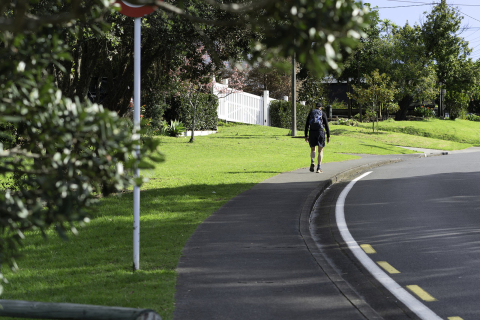If you have COVID-19 you must self-isolate for 7 days.
Day 0 is the day your symptoms started or when you tested positive, whichever came first.
Use the COVID-19 Health Hub to work out your isolation timeline:
- Stay at home — do not go to work, school or any public places.
- Avoid contact with people in your household. For example, sleep by yourself if you can, and limit the time you spend in shared spaces. If you cannot, stay at least 2 metres apart and wear a face mask that covers your nose and mouth when near others.
- You can exercise outdoors in your neighbourhood. Do not visit any shared exercise facility, such as a swimming pool.
- You can get deliveries, such as food and medicine from whānau and friends or by ordering supplies online. Identify a safe drop-off point outside the house to leave supplies.
- Clean and disinfect surfaces regularly. This includes things you touch often, like door handles, light switches and phones.
- Do your own laundry.

Open windows to increase fresh air flow inside. The risk of spreading COVID-19 is highest in crowded and poorly ventilated indoor spaces.
You can download and print posters for your home to tell people you are self-isolating:
- Do not leave the house for any reason, unless it is a permitted reason — such as urgent medical care or exercising. If you cannot work from home during this time, your employer (or you, if you are self-employed) may be able to apply for leave support.
- Do not prepare food for others.
- Do not share items with people in your household. For example, dishes, toothbrushes and towels.
- Do not have visitors. This includes tradespeople, unless it is an emergency. If you have a support carer, they can continue to provide essential care.
- If you are unwell and have symptoms, do not do strenuous, high-impact exercise. Stick to gentle, familiar exercise.
- Do not get a COVID-19 vaccination until you have recovered.
You are allowed to leave the place you are self-isolating for the following reasons. You must always wear a mask. Do not use public transport, taxis or rideshare vehicles.
You can:
- have any medical examination and testing required
- access essential health services for treatment that cannot wait until you finish self-isolation
- attend any court, tribunal, New Zealand Parole Board hearing or other judicial institution you are required to attend
- move to another place of self-isolation to protect your own or another person’s life, health, or safety
- visit a dying relative who is not expected to live beyond your self-isolation
- visit the body of a relative before a funeral or tangihanga, if you will not be able to visit the body after your self-isolation.
You are allowed to exercise outside your home while self-isolating. You can exercise in your neighbourhood, but not using any shared facility, such as a swimming pool or gym. You cannot exercise with other people, unless they are part of your household.
Be mindful to:
- keep your distance from others
- stick to gentle, familiar exercise — do not do anything risky where you may need rescuing
- carry a face mask — you do not need to wear a face mask, but you may feel more comfortable doing so.
